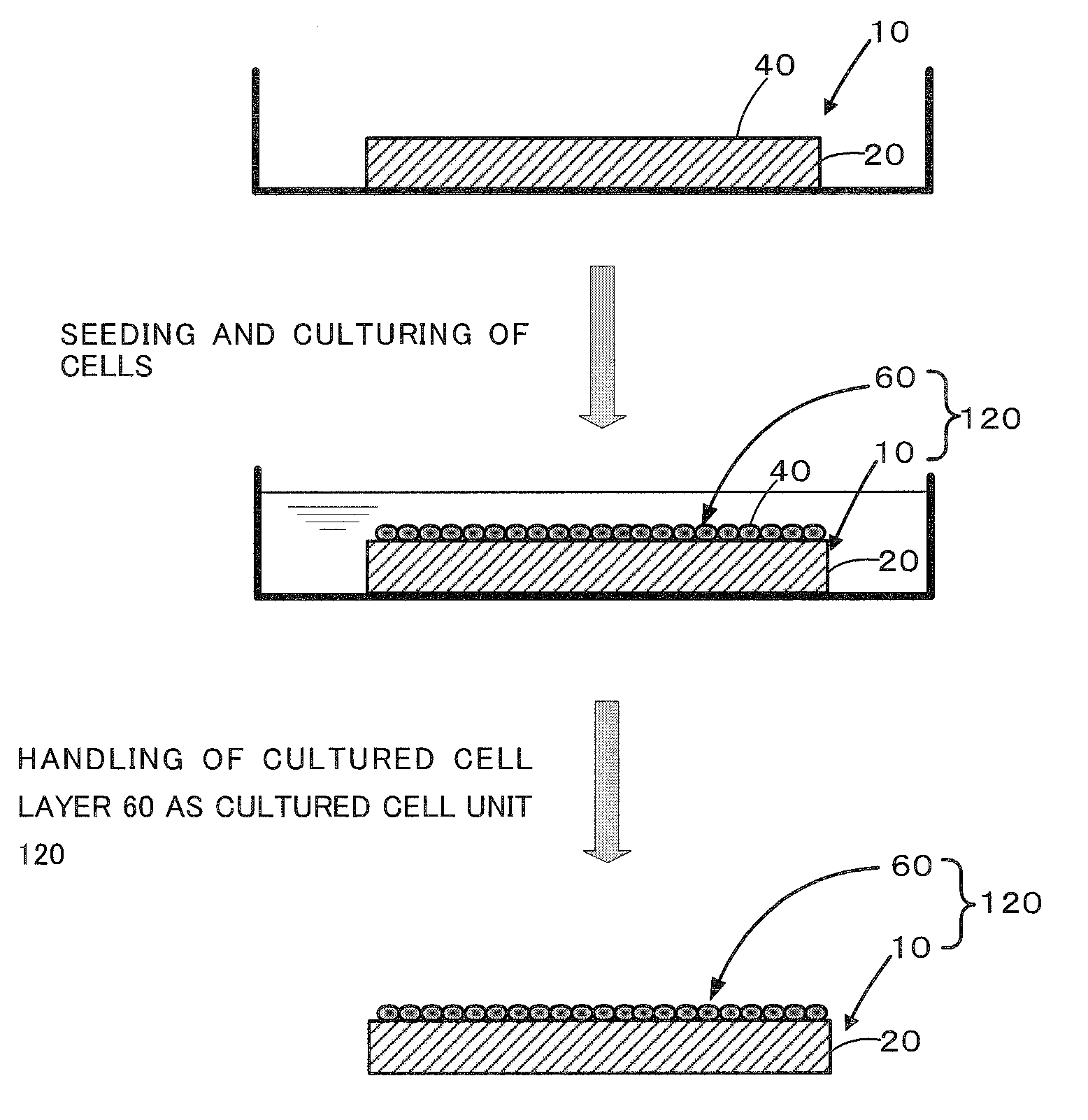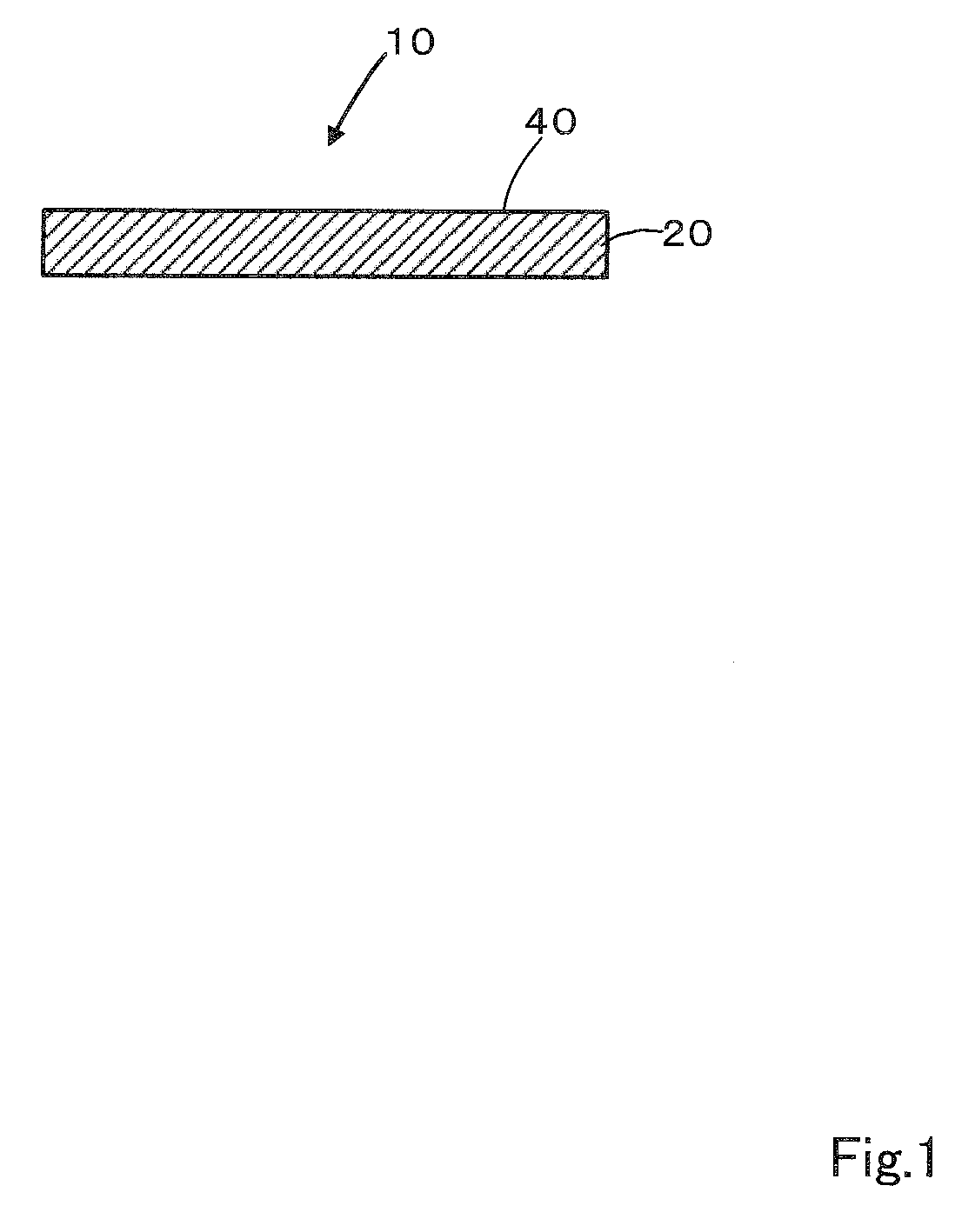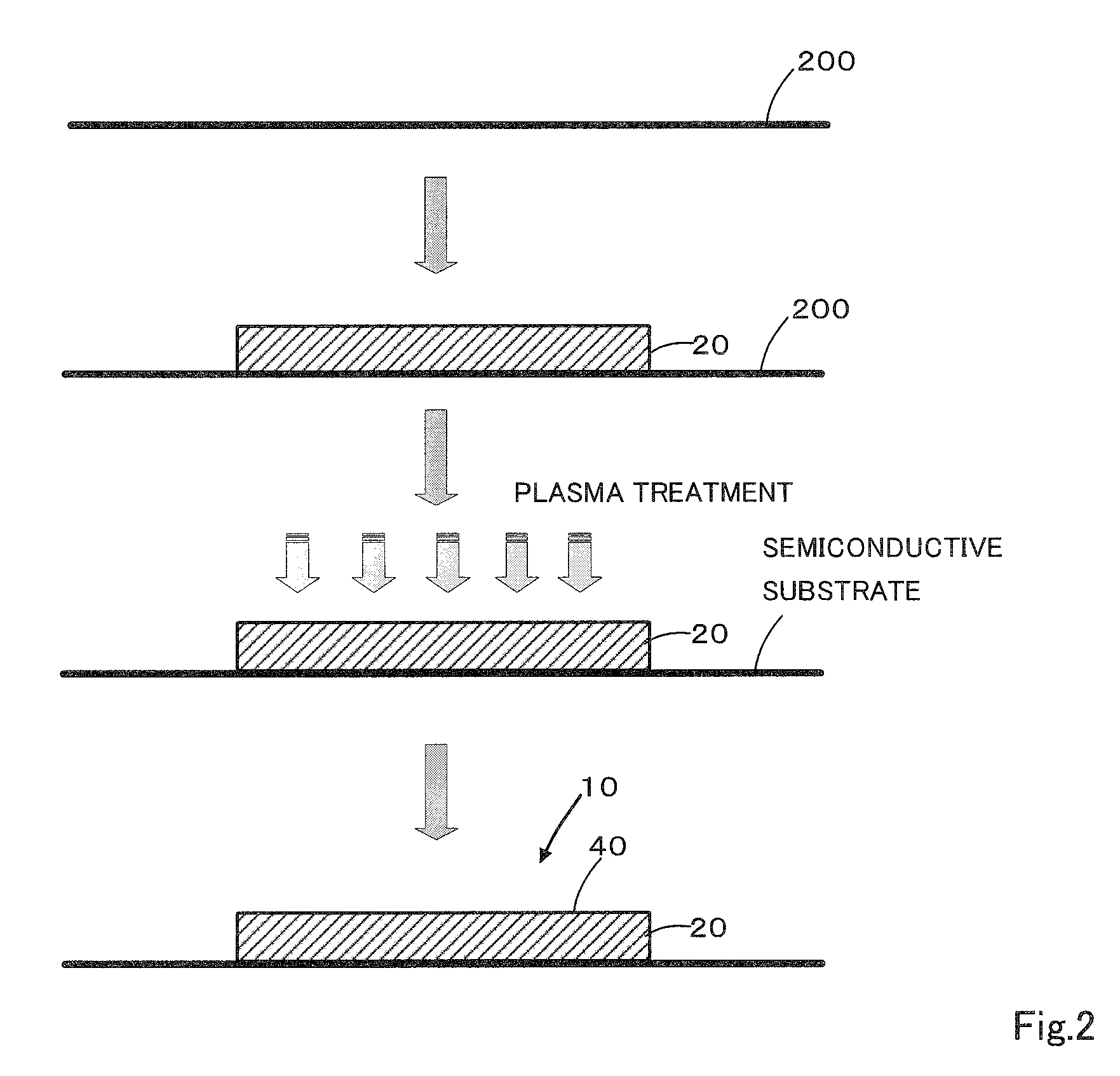Cell culture support and production method and uses thereof
a cell culture and support technology, applied in the field of support, can solve the problems of insufficient thermoresponsiveness, no longer showing cellular adhesiveness, and inadequate means, and achieve the effect of high degree of freedom
- Summary
- Abstract
- Description
- Claims
- Application Information
AI Technical Summary
Benefits of technology
Problems solved by technology
Method used
Image
Examples
example 1
Cell Culture in Plasma Treated PNIPAAm Layer
[0120]In this example, the plasma treatment was carried out on the PNIPAAm layer, and the effect thereof on cell culture was ascertained.
(1) Fabrication of PNIPAAm Film
[0121]A 5 w / v % solution of PNIPAAm (Polysciences, Inc.: poly(N-isopropylacrylamide), molecular weight: approx. 40,000 (viscosity), melting point: >200° C., glass transition temperature: 85° C.) in ethanol was cast on a glass substrate (10 mm×10 mm, in part 18 mm×18 mm (Test Nos. 5, 12, and 17 only) and dried to form a film approximately 50 μm thick and the same size as the substrate. The polymer solution was applied at 50 μL / cm2. In addition, the cast volume was set to 1 / 10, and a film (Test No. 1) with a thickness approximately 1 / 10 the thickness of the others (i.e., approximately 5 μm) was fabricated.
(2) Plasma Treatment
[0122]An oxygen plasma treatment was performed under the conditions shown in Table 1 on the approximately 50 μm thick films fabricated in (1).
(3) Cell Cul...
example 2
Stability of Cellular Adhesiveness from Plasma Treatment
[0127]In this example, cells were cultured on a film fabricated under controlled conditions and stored (in a desiccator at room temperature for 16 days) and on a film fabricated under the same conditions and then used immediately after fabrication. The stability of cellular adhesiveness obtained by the plasma treatment in the two films was compared by observing the state of cell growth. The fabrication conditions for the PNIPAAm film were the same as in Example 1 wherein a 5 w / v % polymer solution in ethanol was cast onto a glass substrate (10 mm×10 mm) at 50 μL / cm2 and dried. The plasma treatment conditions were set to an applied power of 60 W, oxygen flow rate of 6 mL / min, and duration of 10 min on a glass substrate, and cell culturing was carried out in the same manner as in Example 1. An elemental analysis of the surfaces of these films was also performed.
[0128]The results showed no difference in cell growth between the fil...
example 3
Changes in Surface Property of PNIPAAm Layer from Plasma Treatment
[0129]In this example the surface property (contact angle of water) of PNIPAAm films before and after plasma treatment was compared in films fabricated under controlled conditions. The cell growth was also determined in the same manner as in Example 1. The PNIPAAm film fabrication conditions were set, just as in Example 1, in which a 5 w / v % polymer solution in ethanol was cast onto a glass substrate (10 mm×10 mm) at 50 μL / cm2 and dried. The plasma treatment conditions were set to an applied power of 0 W to 120 W, oxygen flow rate of 6 mL / min, and duration of 10 min on a glass substrate. The contact angle of water was measured by dripping 5 μL of pure water at 50° C. onto the PNIPAAm surface and measuring after 1 minute had elapsed. The measurement of the contact angle was performed by the θ / 2 method, and the results are shown in FIG. 8.
[0130]Cell growth was excellent at an applied power of 30 W or higher. On the othe...
PUM
| Property | Measurement | Unit |
|---|---|---|
| temperatures | aaaaa | aaaaa |
| transition temperature | aaaaa | aaaaa |
| temperature | aaaaa | aaaaa |
Abstract
Description
Claims
Application Information
 Login to View More
Login to View More - R&D
- Intellectual Property
- Life Sciences
- Materials
- Tech Scout
- Unparalleled Data Quality
- Higher Quality Content
- 60% Fewer Hallucinations
Browse by: Latest US Patents, China's latest patents, Technical Efficacy Thesaurus, Application Domain, Technology Topic, Popular Technical Reports.
© 2025 PatSnap. All rights reserved.Legal|Privacy policy|Modern Slavery Act Transparency Statement|Sitemap|About US| Contact US: help@patsnap.com



